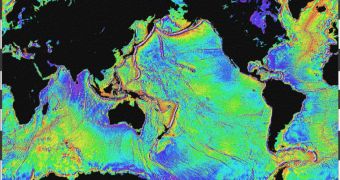Scientists working on the West Coast of the United States have recently set up a new radio antenna system, whose purpose is to investigate the way oceanic currents influence waters in the area.
The grid consists of 78 transmitters, each of which is capable of sending a radio pulse in the waters. The new data will help experts monitor the ocean closer than ever, determining how global warming and climate change are shifting current patterns.
The way water is circulated through the five oceans determines global climate, experts say, in the sense that most of the prevailing climate conditions characteristics to any area are a direct result of the influence the oceans exerted.
For example, the warm climate over Europe is caused by a vortex in the North Atlantis, where warm water releases the heat it stores, and sinks as cold water. The heat is then pushed eastwards over the continent, heating it up and preventing an ice age from occurring yet again.
With the new network, experts hope to finally be able to determine how currents are influencing the climate from the borders of Washington state as far south as Ensenada, in Mexico. Ocean surface currents between these regions will soon pose no more challenges to researchers.
The grid will provide 24-hour surveillance capabilities, producing charts automatically, explains San Francisco State University (SFSU) professor of geosciences Toby Garfield, who is also a member of the research project.
He adds that the basic operating principle driving the system is very simple – each transmitter sends out an FM signal, and then listens to to way it is reflected. Each movement the waves makes affects the wavelength of the radio signal.
These variations are then centralized and calculated, allowing researches to determine the direction in which that patch of water is moving. As the gird extends over hundreds of miles, it will give scientists a comprehensive view of what's going on at the surface of the Pacific.
“The California Current is a general southerly flow but it's not constant. It can reverse near the shore, and it has seasonal cycles. The network allows us to look at perturbations within these large currents and how those impact ecosystems, climate and humans,” Garfield explains.
According to the expert, the grid is capable of covering an area extending about 90 miles from the shorelines. This should give investigators the necessary data resolutions to enable the system to have practical uses, Our Amazing Planet reports.

 14 DAY TRIAL //
14 DAY TRIAL //